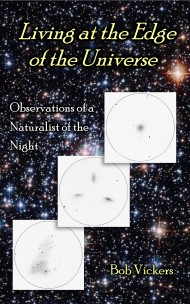The evening of 13 March was very clear so I thought I would go out and observe some more on the Astronomical League’s Galaxy Groups and Clusters list. While I was using Procyon to zero in the finder scope, I noted that the seeing was pretty darn steady. It looked much better than the Clear Sky Chart had predicted, so I decided to have a quick look at Sirius to see if I could see its companion, Sirius B, also known as “The Pup” (Sirius being the Dog Star).
I have been trying to see Sirius B for the past several years as its eccentric orbit carries it farther and farther from the overwhelming glare of its primary. Just last year it passed the point in its orbit where it was discovered in 1862 by one of the sons of Alvan Clark, the famed telescope maker. Sirius B is the nearest white dwarf star to the Earth. It has an apparent magnitude of 8.5 which is 10,000 times dimmer that its brilliant magnitude -1.5 companion, making it a challenge even at a generous 10 arcseconds of separation.
Without really expecting to find anything, I got Sirius (just past its peak altitude to the south) into the eyepiece and watched it drift across the field of view. I knew to look almost exactly east of Sirius A, on the following side as it swept toward the west. Immediately I noticed a small constant dot just outside the worst of the glare. It was embedded in the lesser, more extended glare and just above one of the diffraction spikes from my secondary spider. Wow! I watched it through multiple passes and even moved it around in the field of view to make sure I was not seeing a reflection of some kind, but it remained constant. Now, I can mark this one off my “nutcracker” list.
For anyone interested in spotting The Pup, I recommend making a practice run on Rigel first. It has a slightly brighter magnitude 7.6 secondary and its primary is a not-so-brilliant magnitude 0.1. Its separation is 9.5 arcseconds, so it will give you an idea of how far apart Sirius A & B are. Better hurry as Sirius is rapidly moving off to the west. Good luck, and may the force be with you.



2 Responses to Spotting The Pup